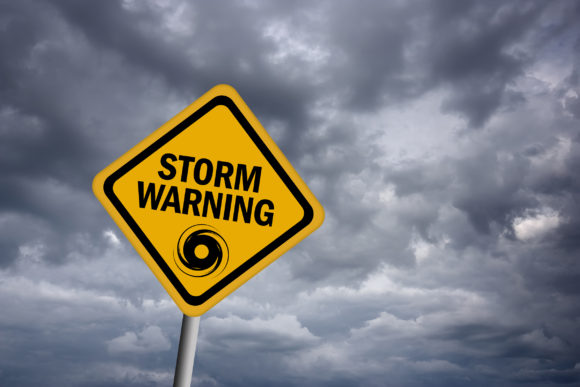Forecasters with the National Oceanic and Atmospheric Administration who are monitoring oceanic and atmospheric patterns say with the demise of El Nino this summer, conditions are now more favorable for above-normal named storm activity for the rest of the hurricane season.
NOAA said on Aug. 8 that the current El Nino in the Pacific Ocean has ended and neutral conditions have returned.
As a result, seasonal forecasters with NOAA’s Climate Prediction Center have increased the likelihood of an above-normal Atlantic hurricane season to 45% (up from 30% from the outlook issued in May). The likelihood of near-normal activity is now at 35%, and the chance of below-normal activity has dropped to 20%.
The number of predicted storms is also greater with NOAA now expecting 10 to 17 named storms (winds of 39 mph or greater), of which five to nine will become hurricanes (winds of 74 mph or greater), including 2-4 major hurricanes (winds of 111 mph or greater).
This updated outlook is for the entire six-month hurricane season, which ends Nov. 30.
“El Nino typically suppresses Atlantic hurricane activity but now that it’s gone, we could see a busier season ahead,” said Gerry Bell, Ph.D., lead seasonal hurricane forecaster at NOAA’s Climate Prediction Center. “This evolution, combined with the more conducive conditions associated with the ongoing high-activity era for Atlantic hurricanes that began in 1995, increases the likelihood of above-normal activity this year.”
On average, the Atlantic hurricane season produces 12 named storms, of which six become hurricanes, including three major hurricanes. NOAA’s hurricane season outlook is for overall seasonal activity and is not a landfall forecast.
Landfalls are largely determined by short-term weather patterns, which are only predictable within about a week of a storm potentially reaching a coastline, NOAA said.
There have been two named storms so far this year, one being a hurricane – Barry, which made landfall as a Category 1 storm near Intracoastal City, Louisiana, in July.
Total economic losses from Barry, largely flood-driven, were expected to exceed US$600 million, while public and private insurers paid out nearly US$300 million, Aon said in its monthly Global Catastrophe Recap report, which evaluates the impact of the natural disaster events.
The report notes that five states have now set new hurricane-related rainfall records since 2017: Texas, Hawaii, North Carolina, South Carolina, and Arkansas.
Topics Catastrophe Trends Natural Disasters Hurricane Aerospace
Was this article valuable?
Here are more articles you may enjoy.



 Project 2025 Plan to End NFIP Welcomed by Some, Rejected by Others in Insurance
Project 2025 Plan to End NFIP Welcomed by Some, Rejected by Others in Insurance  Viewpoint: Deepfake Fraud Is On the Rise. Here’s How Insurers Can Respond
Viewpoint: Deepfake Fraud Is On the Rise. Here’s How Insurers Can Respond  Deere Retreats From Diversity Measures After Online Attacks
Deere Retreats From Diversity Measures After Online Attacks  Soccer Officials Arrested After Melee That Damaged Hard Rock Stadium in Miami
Soccer Officials Arrested After Melee That Damaged Hard Rock Stadium in Miami 


